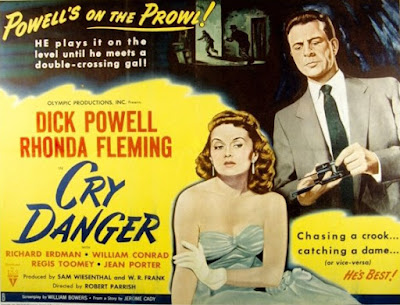Never a dull moment as Anthony Mann directs this story about U.S. Treasury men attempting to break up a counterfeiting ring. An excellent film noir with outstanding cinematography by John Alton and an appropriate score by Paul Sawtell. Amazing what could be done with a five-hundred-grand budget. Within the same year and budget, Railroaded is nearly forgotten. Mann certainly redeemed himself for that earlier effort. Distributed by Eagle-Lion Films, this production cleaned up at the box office. The film is not flawless, but close. One script fumble is when a federal agent, Frank Ferguson, comes down hard on a shop owner for not noticing counterfeit bills. This is after the film established that it takes an expert, under a magnifying glass, to know the difference between real bills.
Navigating through background detail is a narrator, the definitive and commanding, Reed Hadley. After an informer is murdered, the Treasury Department chooses Dennis O’Keefe and Alfred Ryder to go deep undercover. Each has a myriad of details to memorize so they can blend into the crime world without suspicion. O’Keefe is first-rate in a standout role, leaving his earlier music or comedy films behind. Both are vouched for and all goes according to plan. For a while. The creepy steam room scenes are a little unsettling. Or maybe it is just the thought of Wallace Ford sweating under a towel. O'Keefe visits several in a row, trying to track him down. In the end, he is so zapped of strength he can barely stand, noting he lost several pounds by the end of the hunt.
There are edge-of-your-seat moments: in transit with Ford, Ryder is spotted by a friend who uses his real name. To make matters more intense, she is with Ryder's wife. The two meet face to face. Covering for his undercover work, she says, "You are mistaken. My husband is taller and more handsome." Ryder is saved. Ford is suspicious. But none more intense than when O’Keefe witnesses his partner's murder and cannot do anything about it without blowing his own cover. Few were as heartless in film noirs than hitman, Charles McGraw. Always on the edge of violence with a voice that could, if one got close enough, leave abrasions on your face.
Note: This is one of ten films for the unknown Mary Meade, four of which are uncredited. She plays the nightclub photographer/counterfeit contact, Evangeline, during this peak period of her career. Much more success came to June Lockhart, here in her sixth post-World War II film as the wife of Alfred Ryder's character.





